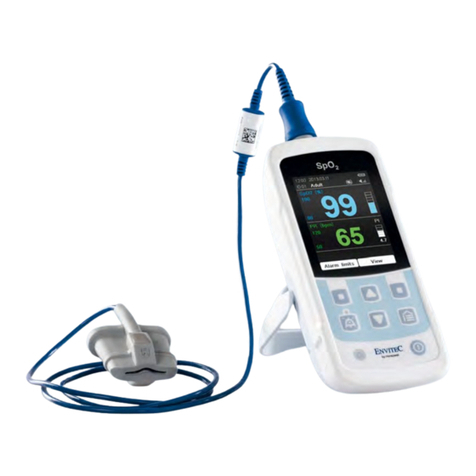
046-07-GA_Oxi_B-a_eng 3
1. Safety instructions
1.1. General safety instructions
These instructions for use are an integral part of the equipment. They should at
all times be kept near the equipment.
In order to use the equipment intended, to handle it correctly and so use the
equipment safely, exact compliance with the instructions for use is necessary.
The symbol means: observe instructions for use. It indicates points which
particularly need to be observed when using the equipment.
The quality assurance system used throughout EnviteC-Wismar GmbH
corresponds to the standards DIN EN ISO 9001 and EN 46001.
There are no warranty claims for damages caused by the use of unsuitable
foreign equipment and materials.
Defective equipment and empty batteries or storage batteries should not be
placed in domestic waste and should be disposed of in accordance with the
relevant national or local regulations.
The equipment is not authorised for use in explosive areas.
1.2. Safety instructions for oxygen sensor
-Do not mechanically damage the sensor. Do not use damaged
products. Only use for the purposes for which it is intended.
Possible Hazards
Hazards for humans and the environment:
Lead/lead compounds: poisonous if swallowed, dust inhalation or skin
resorption, protective measures in accordance with TRGS 505 (6/88).
Potassium hydroxide solution: hazardous materials regulations
(GefStoffV) "corrosive". Skin or eye contact causes burns.
-Do not use liquid disinfectant
-Remove impurities with a damp disposable cloth.
-Sterilisation with ethylene oxide at maximum 50°C.
-Can be disinfected at 45°C in an aseptor.
























